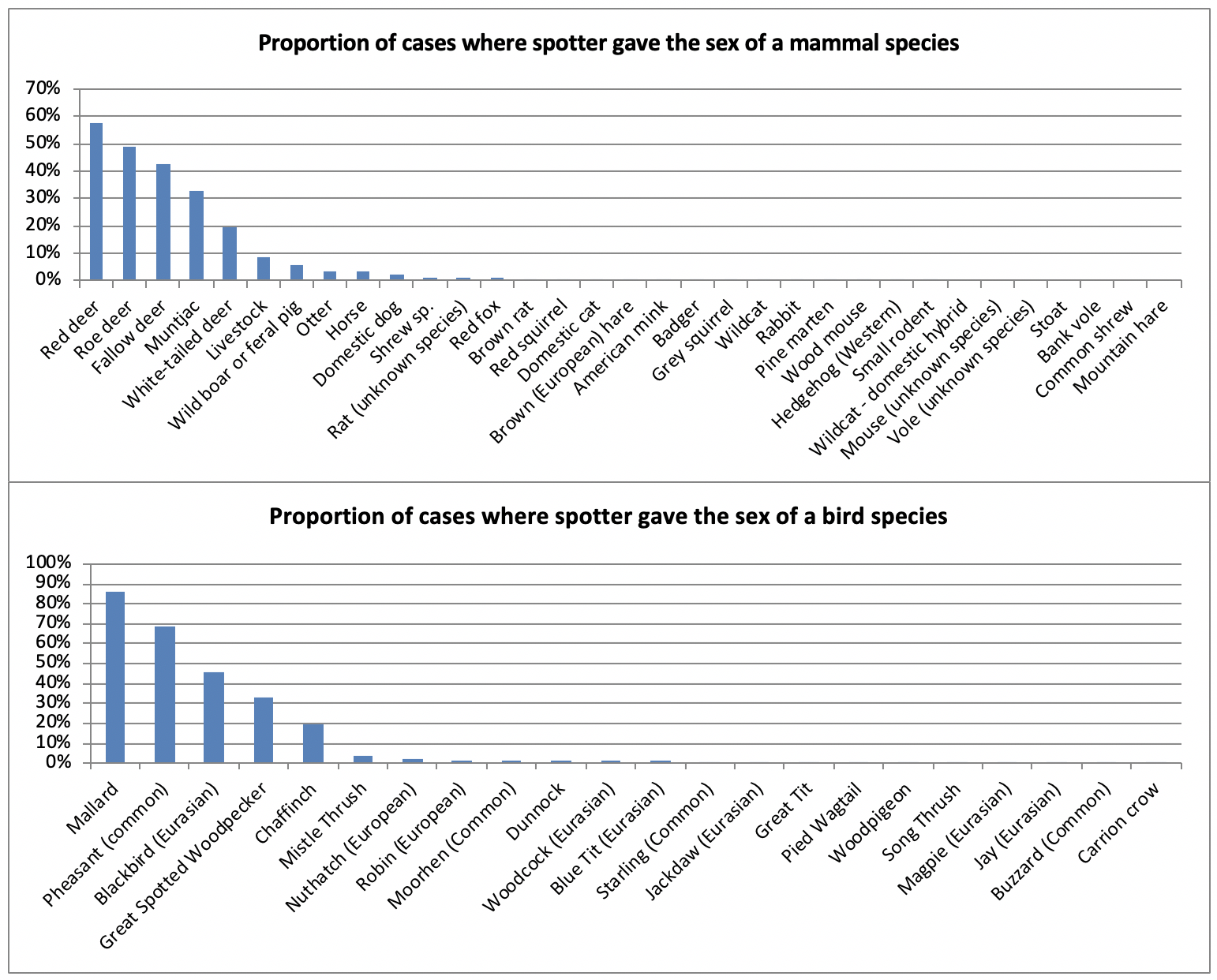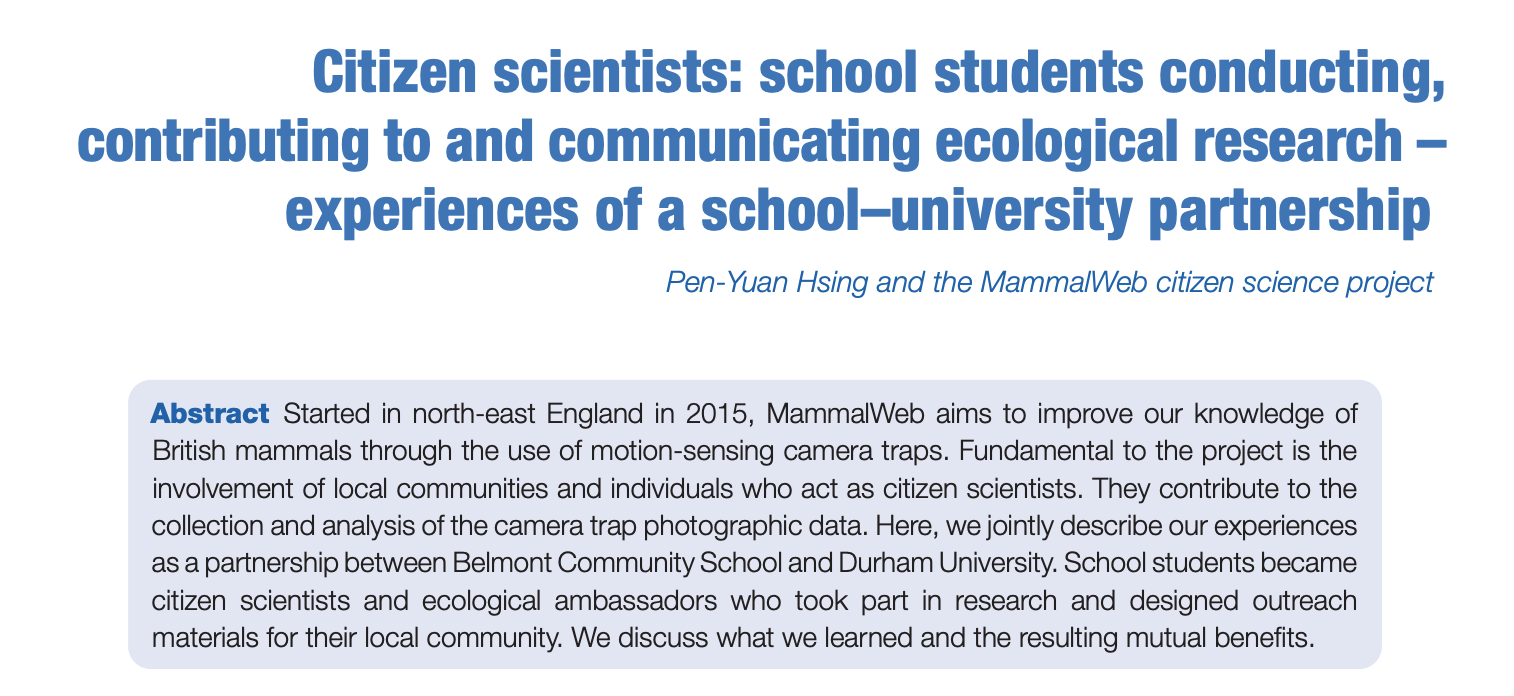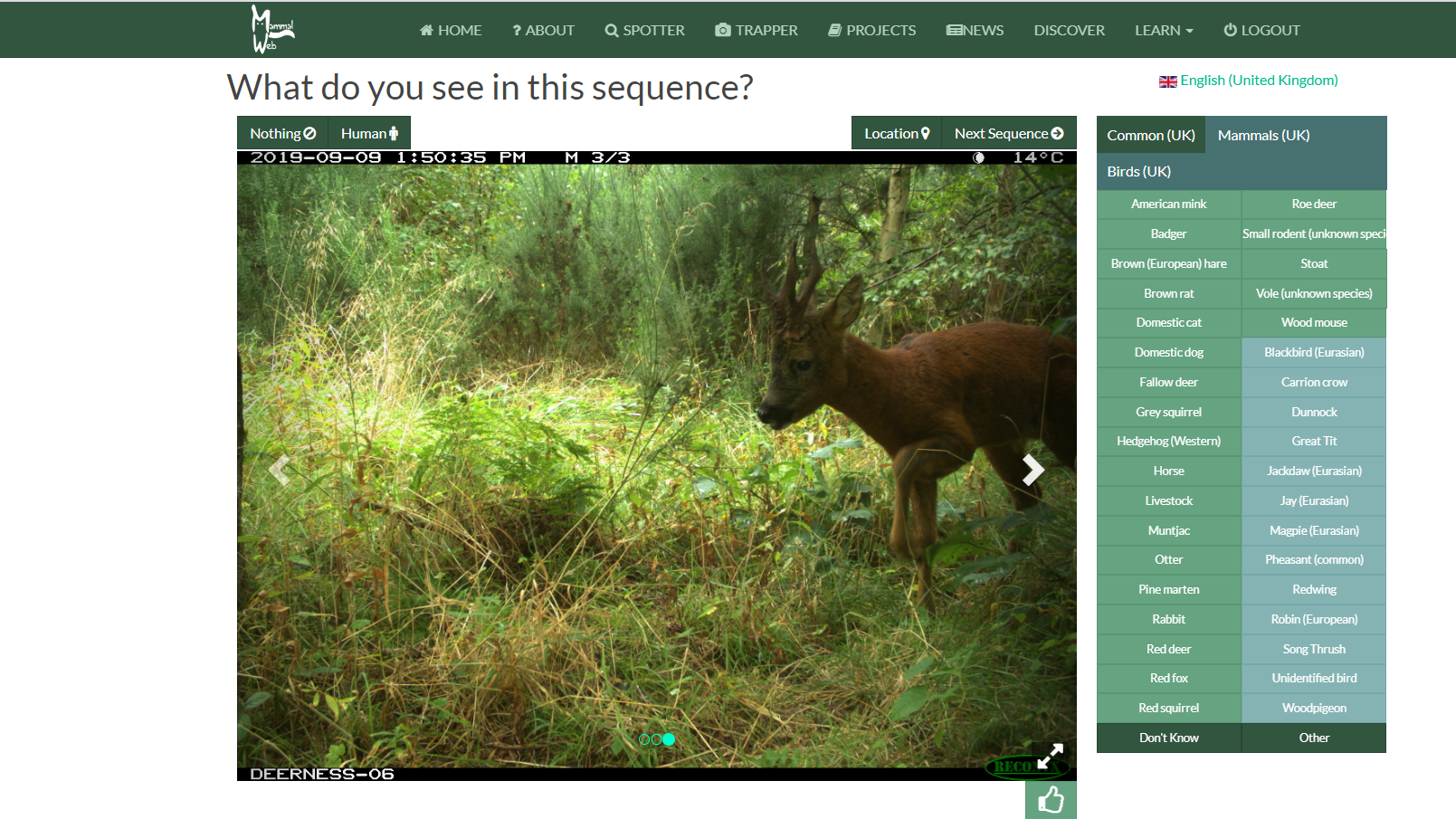12-05-2020
Over the past year we have been working with staff and students at GAP in County Durham on an outreach project funded by the Royal Society Partnership Grant. In March this year students deployed camera traps around Gosforth Park, a nature reserve managed by the Natural History Society of Northumbria. The camera traps captured a whole range of wildlife, and these images have now been uploaded to the GAP camera trapping project on MammalWeb. The project is open to everyone to view and help classify the images, so feel free to take a look!
Lily Willis, a student at GAP, has written the article below which gives more information about the project, as well as her experiences of setting up the camera traps and analysing the images. We hope to bring you more updates in the future as the project progresses!
GAP (Group for Anxious Pupils) is a small group of Year 10 and 11 pupils, based in County Durham, who have come together in an educational setting because of experiences with anxiety and depression. We cannot attend a mainstream school and therefore receive our schooling at GAP with the support of mental health professionals.
We were delighted that the Royal Society awarded us a grant to fund a research project on wild mammals in the UK. Durham University are also working with us and assisting us with the project. Furthermore, MAC Security and Fire are providing expertise to help us develop skills in coding and to support us in building our own camera traps.
During the planning stages of our investigation, we carried out an initial lesson and discussion aided by our groups STEM partner, Sammy Mason from Durham University. Sammy visited us on numerous occasions between March and July 2019, however, due to Durham County Council relocating GAP this lesson didn’t take place until October 1st, 2019. Despite this, we were already familiar with Sammy as we had met her informally numerous times. This was very helpful as it gave us the opportunity to become acquainted and comfortable with Sammy, as she is approachable and friendly. During this brainstorming lesson, Sammy launched the project formally and between staff and students, we discussed our thoughts and ideas on how the project would run and be successful. The main outcomes from this lesson were that we would investigate:
- What species do we share our habitat with?
- Does temperature affect the species found in an area?
- Do we find different species in urban environments, rivers/lakes, woods/forest?
- Do predators and prey live close to each other?
- Does time of day affect what animals you will see (will we see any Nocturnal animals during the day?)
- Do you see more foxes early in the morning than during the day?
- Do scavengers come out at different times of the day?
- Does light pollution affect the number of mammals seen?
- Do you find more rodents where there are humans?
- Are there more deer near farmland than near public parks?
On the 3rd of March 2020, our class took a trip to Gosforth Nature Reserve, again accompanied by our STEM partner, Sammy, who was to help us set up the cameras, as well as pitching suitable locations to set up the cameras. When we arrived at the park, we were greeted by park volunteers, who showed our group around the reserve. They also shared some helpful insight into what locations may be best to capture images of the animals in the area and gather suitable data to answer the questions we had previously brain-stormed in our lesson with Sammy.
I set up my camera viewing a deer trail, which resulted in capturing quite a few roe deer passing by through the woods. I thought that this would be a successful location as we had identified deer prints in the vicinity and in certain parts of the park, the forest debris had been scraped away by deer to make a clearing to sleep on.


As well as this, we placed another camera looking onto a decaying log, which the park staff advised us could be a good place to catch some badgers peeling away the bark and eating insects and larvae. There were some scratches on the bark already, giving a good indication that they might be back.


The experience was fascinating and enjoyable; my favourite part being when we found a skull and I was able to identify that it had belonged to a fox. It was very interesting because it’s not a common occurrence and was proof foxes were living in this area. Another amazing experience was being able to see some roe deer ourselves at the park from afar, as they grazed in a field. After visiting the site, the group were feeling excited and anticipating what we would discover from the camera trap footage.

However, schools closed across the UK on Friday 20th of March, due to the COVID-19 pandemic. This was only four days before we had planned to retrieve our cameras from the site, and we were unable to make our return trip to Gosforth. Nevertheless, Kathryn - one of our teachers - returned to the Nature reserve to collect the cameras, and uploaded the content to the MammalWeb site, enabling us to log in and classify the animals in the photographs as part of our remote learning. I was thrilled to discover that our camera placements were a success! So far, we have been able to classify around 1000 sequences from our camera traps, making us the 80th highest contributor in the country to MammalWeb, as of the time of writing.
A range of animals that we’ve classified include, roe deer, badgers, red foxes, rabbits and grey squirrels. We were even lucky enough to capture a clear photo of a sparrowhawk, perched on a log.

Upon reflection, I personally loved our trip, and I’m confident the rest of my peers did too. This project has given us a unique experience we wouldn’t have had the opportunity to get, as well as gaining new knowledge and skills. From a mental health perspective, it was beneficial to get outdoors and into nature, as well as giving us a very peaceful, strangely therapeutic, job of sorting through all of the images during lockdown. It would have been even better, if not for the COVID-19 pandemic, as we planned a trip to London for the Royal Society Summer Science Exhibition in July, where we were set to present the findings of our project. We are hopeful that this may still happen in 2021.
Written by Lily Willis.
To view a pdf version of this article click here.

 English (United Kingdom)
English (United Kingdom)  Czech (Čeština)
Czech (Čeština)  Nederlands (nl-NL)
Nederlands (nl-NL)  Magyar
Magyar  Deutsch (Deutschland)
Deutsch (Deutschland)  Croatian (Hrvatski)
Croatian (Hrvatski)  Polski (PL)
Polski (PL)  Español (España)
Español (España) 

